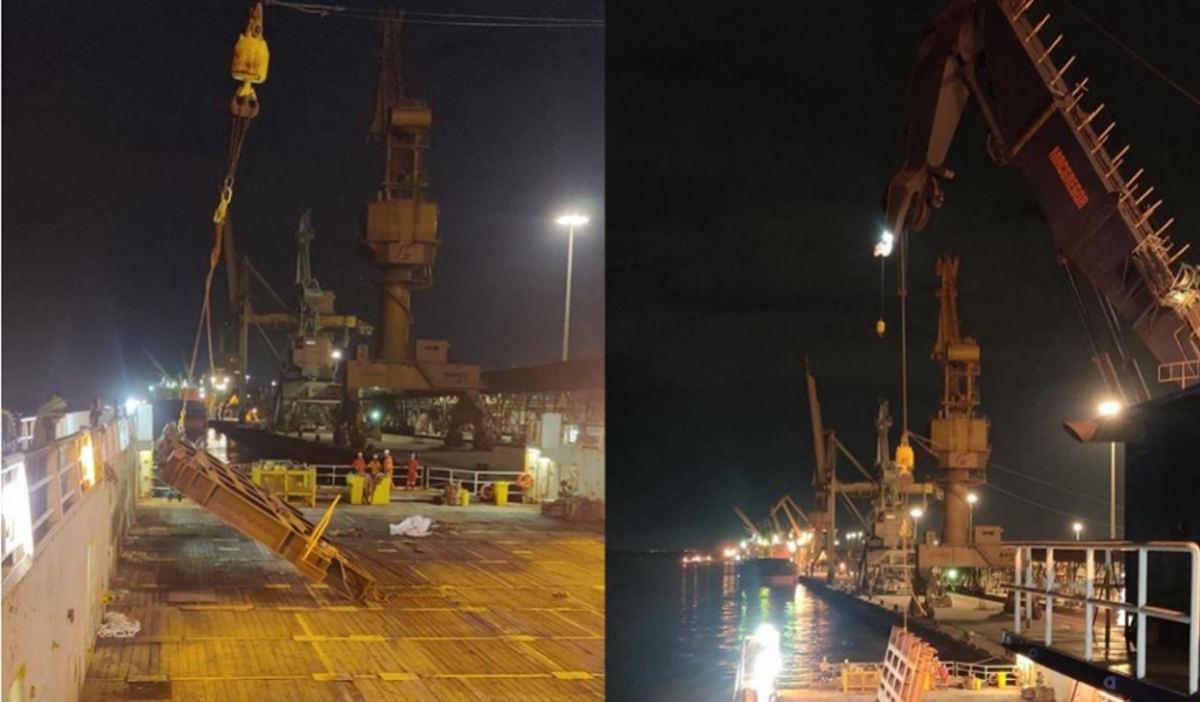Lifting chains parted – hydrogen embrittlement
- Safety Flash
- Published on 21 June 2023
- Generated on 12 July 2025
- IMCA SF 15/23
- 2 minute read
Jump to:
Three of four lifting chains on a load parted while the load was being lifted.
What happened?
The incident occurred in the last lift of sections of grillage from a vessel involved in project demobilisation. At the time of the incident, the grillage was suspended, above the deck, by approximately 4 m.
Following discussion between the Deck Foreman and the Crane Operator, the grillage was slowly lowered down to the deck. There were no injuries.

What was the cause?
Analysis by an independent third party, and the chain manufacturer, concluded that hydrogen embrittlement, causing pitting, exacerbated by the tensile load on the internal radius of the links caused surface corrosion cracking, leading to internal branch cracking and failure.
Actions
The rigging was changed from a four-way bridle arrangement to slings and shackles, and the lift was completed safely.
IMCA Safety Flashes summarise key safety matters and incidents, allowing lessons to be more easily learnt for the benefit of the entire offshore industry.
The effectiveness of the IMCA Safety Flash system depends on the industry sharing information and so avoiding repeat incidents. Incidents are classified according to IOGP's Life Saving Rules.
All information is anonymised or sanitised, as appropriate, and warnings for graphic content included where possible.
IMCA makes every effort to ensure both the accuracy and reliability of the information shared, but is not be liable for any guidance and/or recommendation and/or statement herein contained.
The information contained in this document does not fulfil or replace any individual's or Member's legal, regulatory or other duties or obligations in respect of their operations. Individuals and Members remain solely responsible for the safe, lawful and proper conduct of their operations.
Share your safety incidents with IMCA online. Sign-up to receive Safety Flashes straight to your email.
